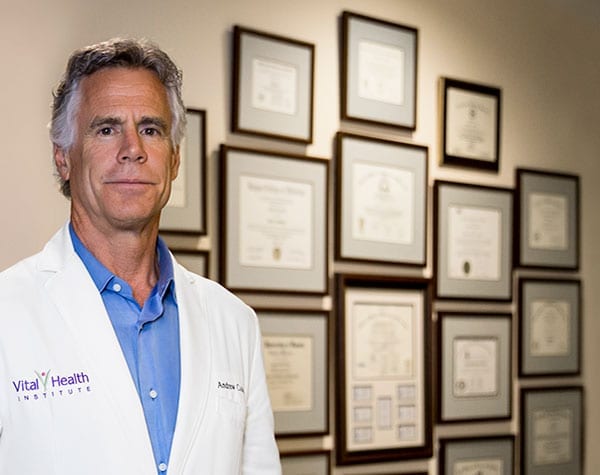How far I had come and how lucky I was to have the support of so many great people! They say that opportunity is the result of hard work in preparation for taking advantage of the right circumstances. My mom and dad had taught me discipline and a great work ethic. They also taught me humility, maybe even a little too much, but they are great parents who raised three amazing sons. I am so proud of my brothers. Any parent knows how challenging it is to raise successful, well-adjusted children.
Anyway, although it had been 12 years since high school, where I was an okay student, here I was standing on the stage being given the presentation for the best research in the world for an OB/GYN resident physician in 1987. How did that happen? Well, it seemed that I had been guided on this path, with the right door opening just at the right time to take the next step. I began to wonder what this path was that I was on and where it was going to lead me because there definitely seemed to be a purpose to what I was doing.
My determination and grades in college resulted in my gaining acceptance to one of the best medical schools, Baylor College of Medicine in Houston, Texas. During my third year of medical school, I just happened to be assigned to a rotation with Dr. Robert Franklin, an amazing endometriosis surgeon, just at the right time to change my life course and pursue this field as a lifelong profession. This also led me to Wichita, where I received some of the best surgical training for honing my natural abilities.
In addition, I met Brooks Keel, Ph.D., my research mentor, who helped me identify and perform award-winning research. Back in the 1980s, most fertility doctors had noticed that there seemed to be variation in the potency of the main fertility medication, Pergonal. Pergonal was made from the urine of post-menopausal nuns. It contained what are called FSH and LH, two hormones that stimulate the ovaries to work, and when given in large doses cause many eggs to mature at the same time. This medication was given to patients as part of the ovarian stimulation in an IVF cycle. The dose on the package was listed as so many units, but we started looking into the question of how they determined how many units were present and how they evaluated the biologic activity of the medication. Well, it turned out that the bioassay used to determine the potency was, if I remember correctly, the weight gain of a rat ovary when exposed to the medication.
Call me a country doctor, but it seemed that this might not be the most accurate way to determine the potency of a medication given to female humans to stimulate egg production. Dr. Keel and I developed a new assay to determine the potency of the medication. We gave it to hamsters and looked at how many eggs matured. We found a significant variation depending on which lot or batch of medication was used. We saved some of the medication from the IVF practice that was determined to be the “good batch,” and it really did make more eggs as determined by our assay.
The next question was “why?” Why did some batches work better than others? Without getting too technical, there are actually small variations in the FSH and LH molecule, about a half a dozen to a dozen. This is called micro-heterogeneity. With some fancy testing, we actually determined the relative composition of these variations for each lot or batch. It turned out that the “good batches” had a particular ratio of sub-fractions, as did the “bad batches,” but the sub-fraction ratio in the bad batches was different from that of the good batches.
We had scientifically proven that there was variation in the potency of various lots or batches, and we answered the question as to why this variation was present. Shortly after our research was published, the company was able to start producing the hormone through what is called recombinant DNA process, in which the DNA to produce the hormone is spliced into a bacterial DNA, which then produces a consistent batch with the exact same biopotency. So, for those of you using fertility medications, don’t worry, all the potency of the batches nowadays are all the same.





